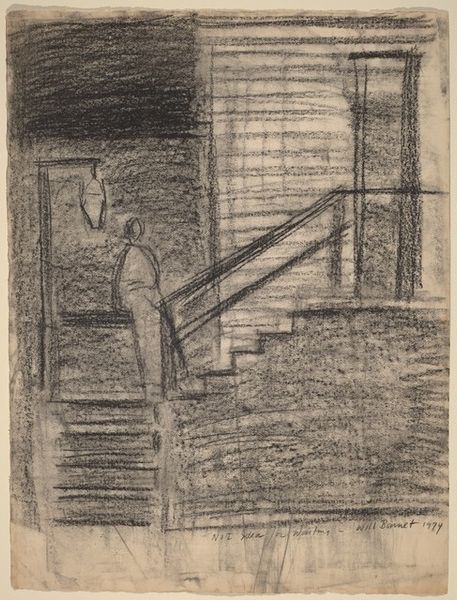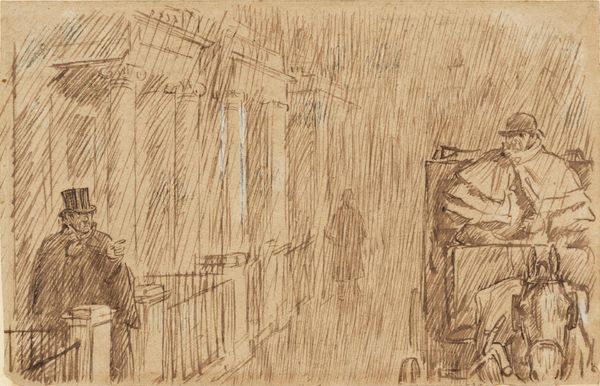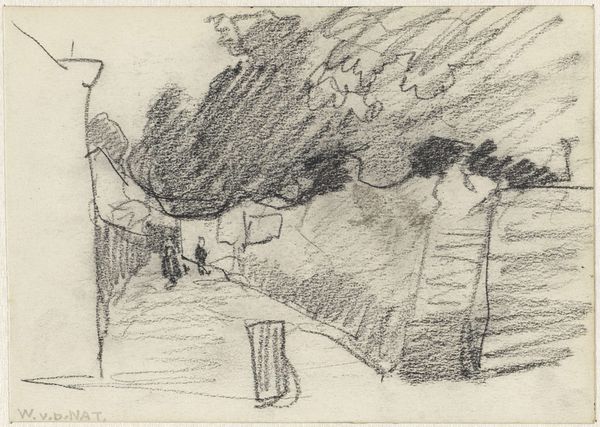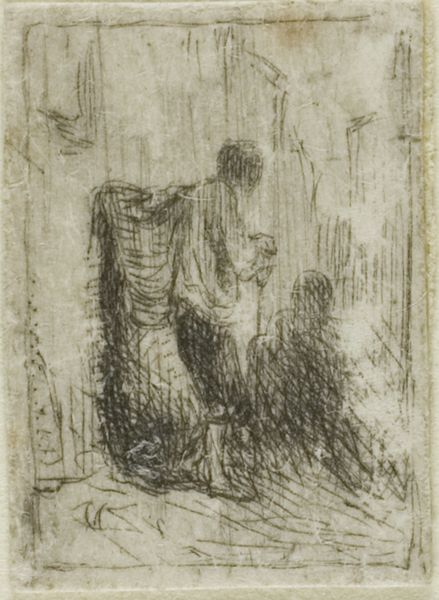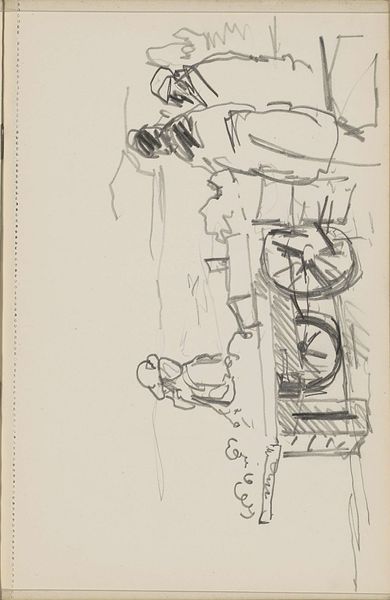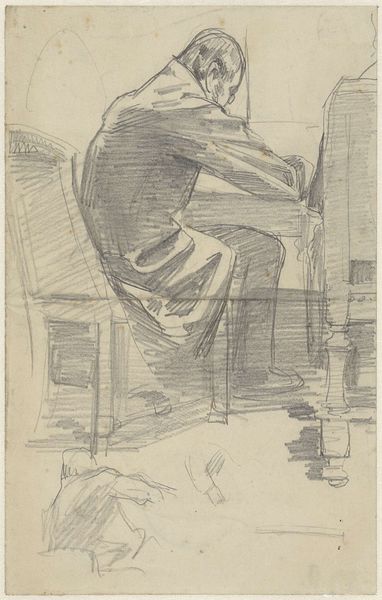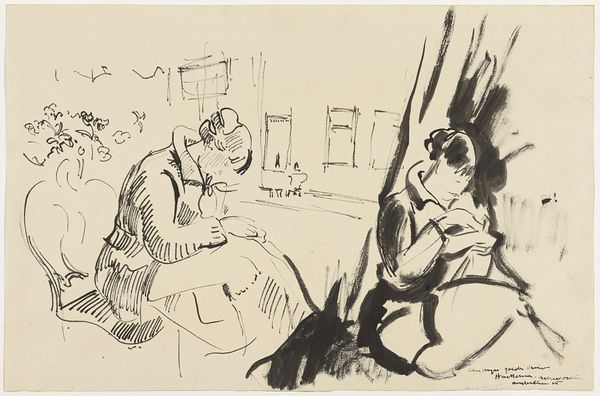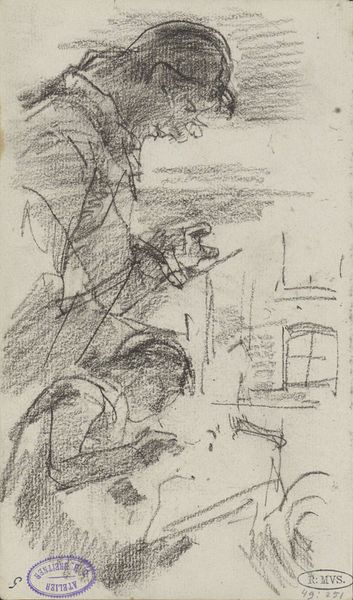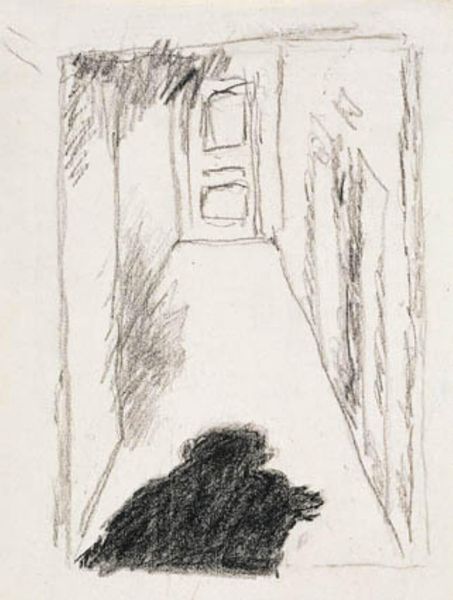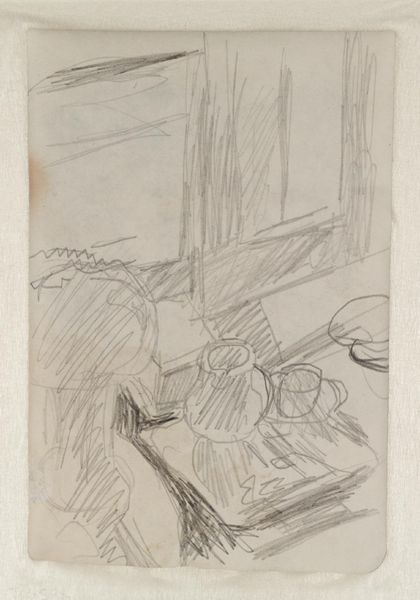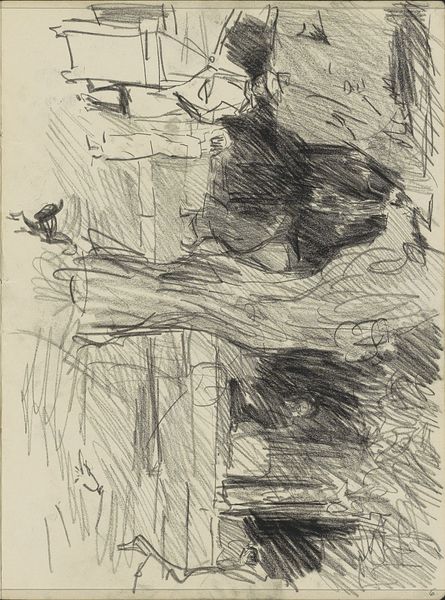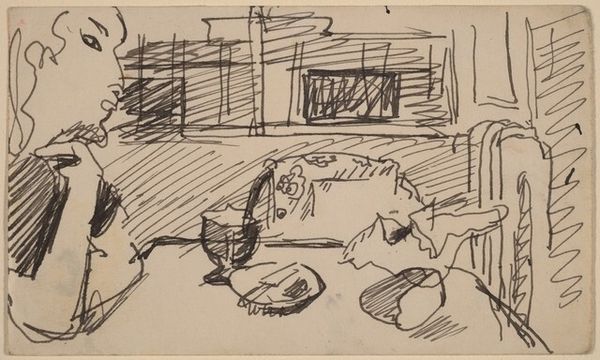
Dimensions: plate: 21.1 x 15.8 cm (8 5/16 x 6 1/4 in.) sheet: 35 x 26.9 cm (13 3/4 x 10 9/16 in.)
Copyright: National Gallery of Art: CC0 1.0
Curator: This etching by Marc Chagall, created in 1922, is entitled "At the Gate." It feels delicate and raw, somehow both at once. What's your immediate sense of the image? Editor: Immediately, I'm struck by how insubstantial it feels. There's a powerful emotional charge but rendered in these ethereal, almost skeletal lines. A memory of a place or a dream? Curator: Chagall was, of course, deeply immersed in the artistic currents of his time, but his work constantly references his own biography. We need to consider Chagall’s complex Jewish identity alongside his relationships with various avant-garde movements. Editor: And looking at the subject—the embrace between what appear to be two male figures is also very significant when discussing identity, of course. The gate, perhaps a symbolic barrier or threshold. What might Chagall be communicating through its visual prominence? Curator: It suggests a portal between the known and the unknown, the self and the other. It reminds us to examine the political dimensions of intimacy and identity. In interwar Europe, such representations carried complex risks and potential social penalties. Editor: True. The moon crescent also feels heavy with symbolic significance. It often appears in Chagall's work, echoing the moon’s prominence in Jewish mystical traditions, for instance. Also, the town in the distance has such longing attached to it. Curator: I see it as not simply longing but maybe also about belonging. It suggests a narrative about home and displacement which clearly resonated through the man’s life. Considering the landscape in conjunction with the embracing figures in the foreground changes how we receive this. Editor: Yes, definitely, the way the etching conveys such yearning and vulnerability with so few lines really gets you, doesn't it? Almost haunting in its simplicity. Curator: Haunting precisely because it gives visibility to feelings denied or marginalized, which is powerful in its own right, for its time. It leaves us pondering questions of individual and collective identity even now. Editor: Yes, indeed. Visual cues become echoes of personal histories, inviting reflection across generations.
Comments
No comments
Be the first to comment and join the conversation on the ultimate creative platform.
